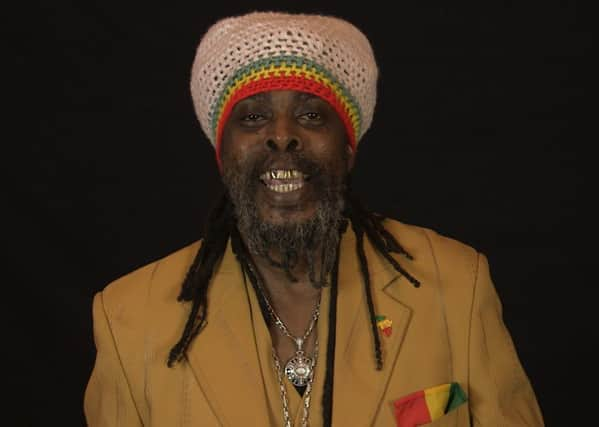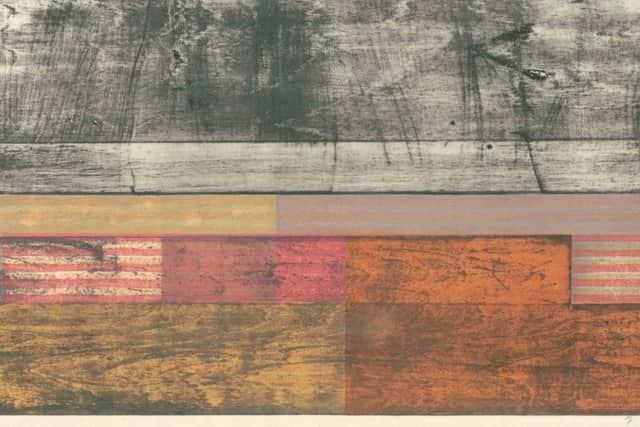Art reviews: Graham Fagen | Summa | Syria in Painting, Photography, Film & Word


Graham Fagen: The Slave’s Lament Scottish National Portrait Gallery, Edinburgh ****
Summa Royal Scottish Academy, Edinburgh ***
Syria in Painting, Photography, Film & Word Summerhall, Edinburgh ****


Advertisement
Hide AdAdvertisement
Hide AdAt the last Venice Biennale in 2015, the sounds of Robert Burns’s ‘The Slave’s Lament’, sung by reggae musician Ghetto Priest, floated down from the open windows of the Palazzo Fontana to the Grand Canal. Now, another Biennale is under way – Rachel McLean is representing Scotland – and Graham Fagen’s acclaimed work is playing to the home crowd in Edinburgh.
Following a show of the complete body of work at Hospitalfield, Arbroath, where the project was curated, the core elements have been distilled for the Scottish National Portrait Gallery: the film installation featuring ‘The Slave’s Lament’, and the bronze Rope Tree which, in this dimly lit space, looks beautiful and mysterious. Three earlier prints by Fagen have been added, plus the gallery’s iconic portrait of Burns by Alexander Nasmyth.
The work represents the conclusion of Fagen’s long fascination with the fact that Burns, in 1786, planned to leave Scotland for a job on a Jamaican sugar plantation – until the publication of his first book of poems persuaded him to stay. For a show in Tramway in 2006, Fagen recorded Ghetto Priest singing ‘The Slave’s Lament’. The Scotland + Venice commission enabled him to revisit that idea, commissioning a new arrangement by composer Sally Beamish which is performed by Ghetto Priest and musicians from the Scottish Ensemble, in collaboration with producer Adrian Sherwood and guitarist Skip McDonald from legendary dub label On-U Sound. In the (as it turns out) superb acoustics of the SNPG’s ground floor space, it looks and sounds wonderful.
In Venice, the work was part of a thread of questioning running through the Biennale about the state of the world and our part in making it so. At the SNPG, it feels as if it has come home in more than one way. In a building which is a home for stories from our past, and in which those stories can be re-examined, it feels particularly vital. How would it change our perception of our nation and ourselves if Burns, our ploughman poet and working man’s hero, had gone abroad and worked as a manager of slaves? Brilliantly, Fagen asks this question while affirming Burns, through the voice of an Afro-Caribbean musician and a crack team from both classical and reggae traditions. It’s no surprise that Nasmyth’s Burns looks mildly pleased with what he’s hearing.


The theme of artists returning to play to the home crowd is continued in Summa, part of a “year of extraordinary showcases” at the Royal Scottish Academy. Summa (the word means a synthesis or summary), celebrates a particular aspect of the RSA’s work, the Residencies for Scotland programme, by which the organisation funds artist residencies across the country, often with multiple project partners.
The curators have the difficult job of bringing together ten artists who have taken part in residencies, but otherwise have little in common. Some have responded directly to the place where they were resident. Paul Furneaux is best known for his abstract Japanese woodcut prints, but on a residency on the Isle of Lewis, he was inspired to draw outside. His pastel and ink sketches are displayed here along with prints, both abstract and representational, a fascinating insight into an artist’s mind at work, synthesising ideas, forms and colours and exploring different directions. Stuart McAdam had a clear brief for his project on North Uist, which he approached with characteristic humour and sense of adventure, while Hannah Imlach’s Nautilus Turbine sculpture is a clear response to her time on the community-run island of Eigg, and in particular its pioneering approach to renewable energy.
For others, the residencies offered resources for research, access to equipment or materials, or simply time to make new work. Rachel McBrinn was able to research her film, Emma’s Holograph Writing, a compelling exploration of the life of William Gillies’s sister, Emma, a talented potter who died in her mid-thirties in a psychiatric hospital. Ilana Halperin, on the Black Isle, looked into local geology while also continuing projects inspired by time in New York and Japan. Sculptor Aeneas Wilder used the space to perfect the building of a new kind of structure. Anneli Holmstrom, in Orkney, made films about Sweden and Portugal.
Advertisement
Hide AdAdvertisement
Hide AdIf the show feels disjointed at times, and some of the works need more context, it is still an important insight into the way in which artists work, and the resources needed to support that process.
When it comes to bringing one place to life in another, there can be few exhibitions which do this more urgently and vividly than Syria in Painting, Photography, Film and Word at Summerhall. Bringing together work by professional artists, photojournalists and filmmakers with work by Syrian refugees in Edinburgh, it’s uneven at times, and sprawling too, occupying a network of basement rooms, but it comes together as a heartfelt, multi-faceted portrait of a situation that defies understanding as much as it needs to be understood.
Painter Nihad Al Turk was an established, award-winning artist when he was forced to flee the Assad regime in Syria. He now lives in Edinburgh, and his assured, large-scale symbolic paintings (shown in the café at Summerhall) have become infused with elements of the Edinburgh landscape, as well as the events in his homeland – a moving canvas just completed marks the life of a little girl caught in a gas attack in April in the town of Khan Sheikhoun.
Photographs by Lens Young Dimashqi, a group of youth activists making work anonymously because they say to give their names would endanger their lives, takes us into the heart of war-ravaged Damascus. The best of their images pick out the details which bring the situation to life, such as the young boy in a city of heat, power cuts and food shortages, pleased as punch at having obtained a bag of ice. Photojournalist Delil Souleiman focuses on the plight of children in Syria in images which are strong, poignant and never sentimental.
There are more artists, too many to mention, as well as showcases from projects such as PositiveNegatives, a charity which tells the stories of refugees and human rights abuses in comic book form.
The show presents a fragmented portrait of a land of colour and beauty and great suffering, but also gives the sense of a Syrian community here in Edinburgh trying to make new homes in a new – and peaceful – country. Artists such as Nihad Al Turk and filmmaker Rami Shaya express the contradictory forces in their work: the pull towards making a new home, and the longing that always looks back to the country you loved and the people you left behind.
Graham Fagen: The Slave’s Lament until 29 October; Summa until 2 July; Syria in Painting, Photography, Film & Word until 4 June